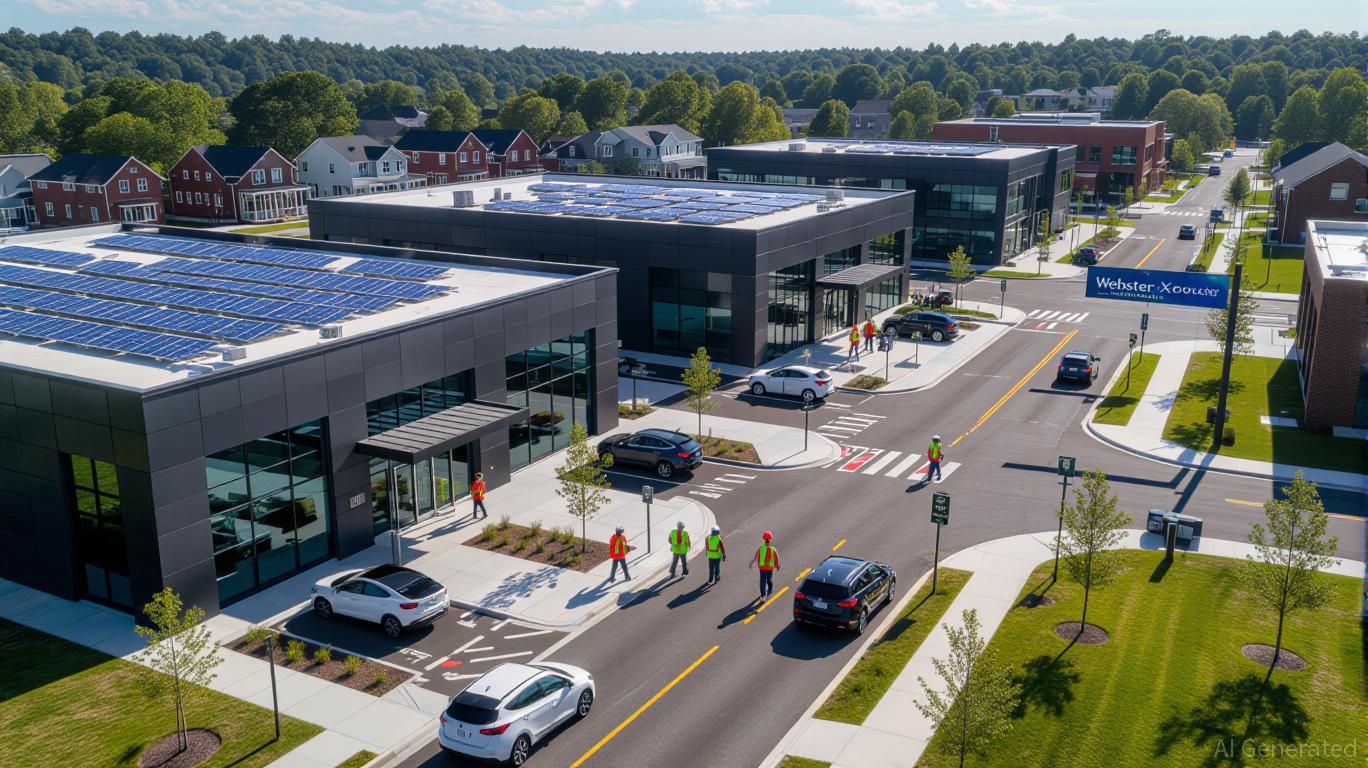Vitalik Buterin Backs ZKsync, Igniting Fresh Hopes for Layer 2 Scaling
- ZKsync's Atlas upgrade (Oct 2025) achieved 15,000 TPS and $0.0001 per transfer costs via RISC-V-based zkVM, solving Ethereum's scalability limitations. - Vitalik Buterin's endorsement catalyzed institutional adoption, with Deutsche Bank and Sony leveraging ZKsync for cross-chain settlements and data privacy. - ZK token surged 50% post-endorsement, while ZKsync's TVL reached $3.5B by 2025 through EVM compatibility and liquidity interoperability breakthroughs. - Upcoming Fusaka upgrade (Dec 3, 2025) aims t
The ZKsync Atlas Upgrade: A Leap Forward in Technology
Launched in October 2025, the ZKsync Atlas upgrade represents a significant advancement in zero-knowledge (ZK) technology. With the introduction of a high-speed sequencer that can handle more than 15,000 transactions per second (TPS) and reduce transaction confirmation times to just 250–500 milliseconds,

Another major innovation is the zkSync OS, a flexible operating system layer that accommodates various execution environments, including full EVM compatibility. This means Ethereum contracts can run on ZKsync without modification, removing barriers that have previously restricted cross-chain liquidity.
Vitalik’s Endorsement: Boosting Institutional Trust
Vitalik Buterin’s public commendation of ZKsync—describing its progress as “underrated and valuable”—has elevated the importance of the Atlas upgrade beyond just technical communities.
This wave of institutional participation is further highlighted by
Strategic Impact on Ethereum and DeFi
The effects of the Atlas upgrade go far beyond improved performance.
Additionally, the integration of the ZKsync Gateway—a trustless protocol for cross-chain interoperability—has removed obstacles between Ethereum’s Layer 1 and Layer 2. By enabling instant liquidity transfers, it reduces reliance on bridges, which have historically posed security risks. This change not only boosts market efficiency but also supports Ethereum’s broader vision of a cohesive, multi-layer blockchain system.
Looking Ahead: Fusaka and Future Prospects
Looking to the future,
Nonetheless, there are still hurdles to overcome. Regulatory attention on ZK-based privacy tools, especially after the crackdown on Tornado Cash, means ongoing development of compliance-friendly protocols is essential.
Conclusion
Vitalik Buterin’s support for ZKsync is more than just recognition of its technical achievements—it signals a strategic direction for Ethereum, emphasizing the importance of robust, interoperable Layer 2 solutions. The Atlas upgrade has proven that
With the Fusaka upgrade on the horizon and ZKsync’s ecosystem growing, the question is no longer whether Ethereum can scale, but how rapidly the rest of the industry will adapt to these advancements.
Disclaimer: The content of this article solely reflects the author's opinion and does not represent the platform in any capacity. This article is not intended to serve as a reference for making investment decisions.
You may also like
Bitcoin News Today: Xapo's Enhanced Bitcoin Fund Signals Growing Institutional Confidence in Digital Assets
- Xapo Bank expanded its Byzantine BTC Credit Fund after $100M in institutional allocations, reflecting growing demand for Bitcoin-backed yield products. - The fund uses Hilbert Group's institutional-grade lending process to generate low-risk returns for Bitcoin holders through collateralized loans. - Xapo's expansion follows 2022 lending sector collapse, leveraging regulatory compliance in Gibraltar/Cayman to rebuild institutional trust in Bitcoin collateral. - The product differentiates from ETFs/stablec

Bitcoin News Update: Movements of Investors' USDT Indicate Bitcoin Highs and Periods of Profit Realization
- Bitcoin's price inversely correlates with USDT outflows, as investors shift liquidity between assets during market cycles. - S&P Global downgraded USDT's stability rating to "weak" due to 5.6% Bitcoin allocation and opaque reserves amid U.S. regulatory reforms. - The GENIUS Act and EU's MiCA framework are reshaping stablecoin markets, forcing Tether and Circle to launch jurisdiction-specific, cash-backed alternatives. - Institutional ETF activity, including Texas's Bitcoin purchases and fragmented inflow

The New Prospects for Economic Growth Infrastructure in Webster, NY
- Webster , NY, leverages $9.8M FAST NY grants and PPPs to transform Xerox campus into a high-tech industrial hub. - Infrastructure upgrades including roads, sewers, and electrical systems aim to attract advanced manufacturing and renewable energy firms. - Governor Hochul's strategy drives $51M in upstate investments, creating 250+ jobs via projects like the $650M fairlife® dairy plant. - Redevelopment boosts industrial land availability and residential property values by 10.1%, with mixed-use zoning enhan

The Impact of Artificial Intelligence on Contemporary Portfolio Management: Potential Benefits and Challenges
- AI redefines portfolio management with real-time analytics and dynamic asset allocation, shifting from static human-driven strategies to data-centric systems. - Generative AI tools like ChatGPT automate financial workflows, enabling hyper-personalized strategies and boosting business outcomes through optimized digital presence. - Risk modeling evolves via AI's pattern detection, but challenges persist in transparency and bias, requiring explainable AI frameworks and human oversight. - Institutions integr
